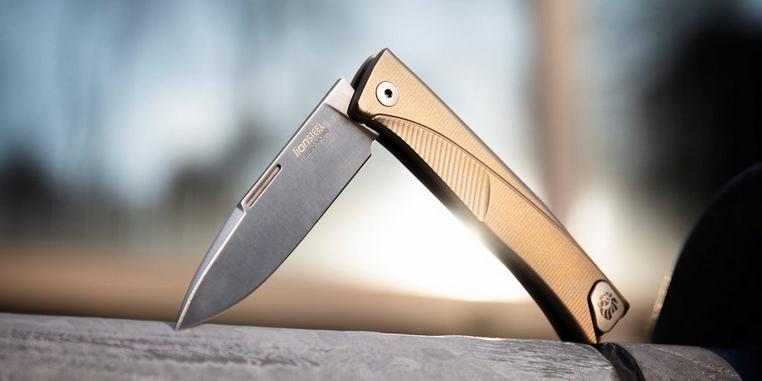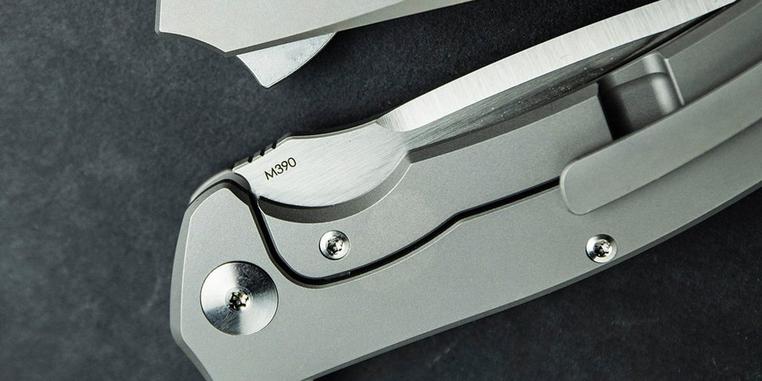Böhler M390 steel: what is it and why is it so popular?
Böhler M390 is one of the most popular types of steel at the moment. It is praised for its excellent sharpness retention. But where did this superstar in the knife world come from? And why is M390 so popular? Knivesandtools explains!
Where does Böhler M390 come from?
Böhler M390 comes from the Böhler Edelstahl GmbH & Co KG factory in Kapfenberg, Austria. This manufacturer produces types of steel that are incredibly wear and tear resistant. The so-called 'specialty steels'. It might come as quite the surprise, but almost all types of steel as we know them today were not developed as knife steel. Many types of steel were developed for ball bearings or parts in jet engines. The same applies to Böhler M390.
Even though Böhler M390 is one of the most popular and best performing types of steel on the market, Böhler developed it to be used in moulds for the injection moulding industry. When you look at the Böhler datasheet you can still see that it is listed as the primary purpose. The fact that it is also great for use in knives is considered to be an alternative purpose.
For these moulds the steel also needs to be extremely wear and tear resistant. If you want to be able to take the same shape from one mould approx. 10.000 times, it shouldn't wear out between casting it the first or the 10.000th time. That is why these moulds are made from top-quality types of steel.
It is therefore not that surprising that M390 is used as steel for moulds. The industrial market is, after all, much bigger. Böhler can sell a lot more kilos of steel to this industry than the knife industry where you are talking about relatively small and light-weight sheets of steel.
Why is Böhler M390 so popular?
This question comes with a short answer: sharpness retention. M390 is so wear and tear resistant it also properly maintains the shape of the edge. As such a knife made from M390 steel will retain its sharpness for a very long time. This means you don't have to sharpen your knife as often. Not only great because sharpening your knife takes time, but also because it means your knife will last longer. After all, the more often you sharpen your knife, the faster it will wear out. It is not possible to sharpen a blade over its full height: the blade will become too thick behind the edge. This means it won't be as easy to use.
Why is M390 so wear and tear resistant?
To answer this question we need to look at the chemistry and the production process of this steel. First the way Böhler produces its M390. M390 is produced according to a powder metallurgical process. This requires some explanation.
Normally a manufacturer combines different elements in an alloy, pours out large blocks and flattens them to end up with sheets that can be used by knife manufacturers. Böhler, however, takes it up a notch. After putting these elements together they put them in a gas-atomizing machine which sprays the melted steel like a type of diffuser. The result is that the structure becomes much finer on a molecular level.
There are, of course, other manufacturers who have mastered this process. Take, for instance, Crucible with the CPM method or Carpenter which has called it the Micro Melt.
Afterwards you can check out the chemical composition of the steel. This is what M390 looks like:
| Carbon | 1.9 |
| Chrome | 20.0 |
| Molybdenum | 1.0 |
| Tungsten | 0.6 |
| Vanadium | 4.0 |
| Manganese | 0.3 |
| Silicon | 0.7 |
We can tell you a lot more about which element takes care of which qualities, and how a combination of specific elements ensure that you end up with the excellent qualities of M390, but we prefer to keep it simple and just mention the advantages!
Advantages of Böhler M390
In addition to sharpness retention M390 has a few other fine qualities. It can be hardened to a relatively high hardness without it breaking quickly. This, however, doesn't mean that M390 is very tough. It does mean that M390, when compared to other types of steel, can be sharpened a little thinner.
M390 is also relatively stainless. Because of the large amount of chrome rust won't stand a chance. Especially when compared to other hard types of steel that are known for their sharpness retention but can still be affected by rust.
Disadvantages of Böhler M390
Where there are advantages, there will also be disadvantages. M390, for instance, is relatively expensive. In terms of purchase price per kilo, but also in terms of modification. Wear and tear resistant namely also means hard to modify. As such you need more time to modify it, but your sanding belts will also wear out a lot faster. A knife made from M390 steel is therefore often more expensive than a knife made from a different type of steel.
M390 is also not that easy to sharpen. That is to say: you won't get very far by using a simple Arkansas stone. M390 prefers diamond-coated stones or ceramic options. Preferably under a very fixed angle. M390 is also not incredibly tough. It also isn't brittle, but you do need to take this into account.
Perfect purposes of M390
M390 excels when used for smaller knives. Think of pocket knives or smaller fixed knives. When you produce a larger knife you need a type of steel that is a lot tougher, something M390 simply does not excel at. Its brother, N690 is then a much better option.
Types of steel that closely resemble Böhler M390
On a chemical level there are a couple types of steel that closely resemble M390. Take, for instance, CPM 20CV and Carpenter CTS-204P. The components and production process are similar. And if we take into account all the cutting tests we carried out we can also say that, in terms of performance, they are also similar. Is one of these types of steel better than the other? No. The differences are so small that no mere mortal will ever notice them.
But there is a catch: the heat treatment
Up until now we have constantly talked about the type of steel and its composition. And yet this is perhaps not even the most important part. There is, for instance, the heat treatment. It is sometimes said that the type of steel is the body, but that the heat treatment determines the soul of the steel. There are namely different recipes to harden the same type of steel. It could, for instance, occur that M390 won't retain its sharpness as long with some manufacturers, but will be tougher and more corrosion resistant. Or that the competition introduces knives with an extremely wear resistant M390 that are more sensitive to rust. Are some better than others? That depends on the purpose. It is a choice. The tougher version will perform better during the more demanding tasks. The harder version will function better if you only need to pay attention to wear and tear and sharpness retention.
Knives with a blade made from M390 steel
Curious about Böhler M390? Great! We made a list of all pocket knives and fixed knives with a blade made from M390.









